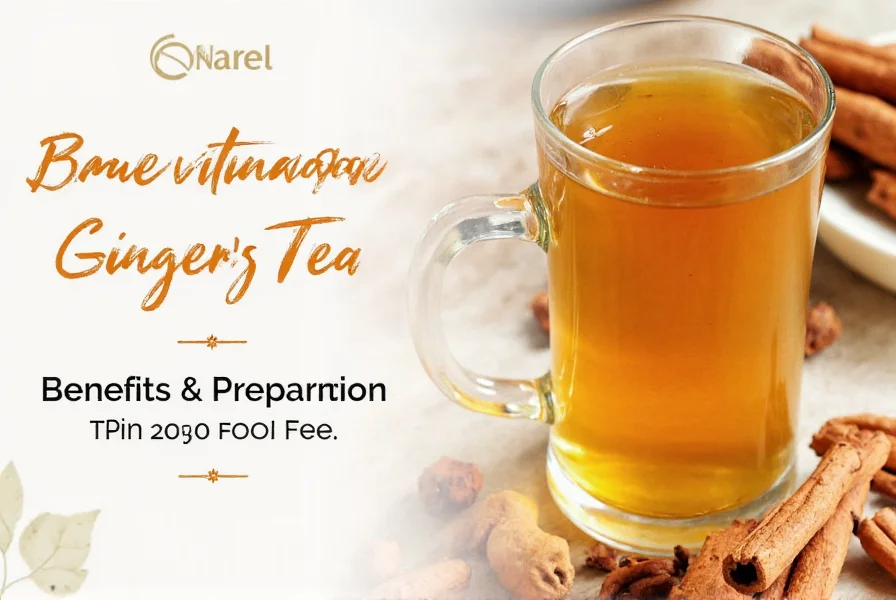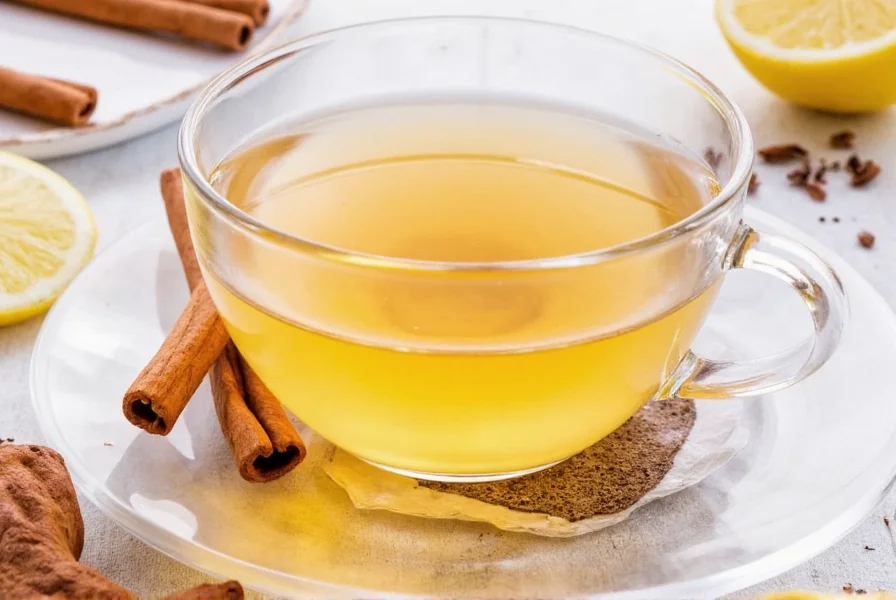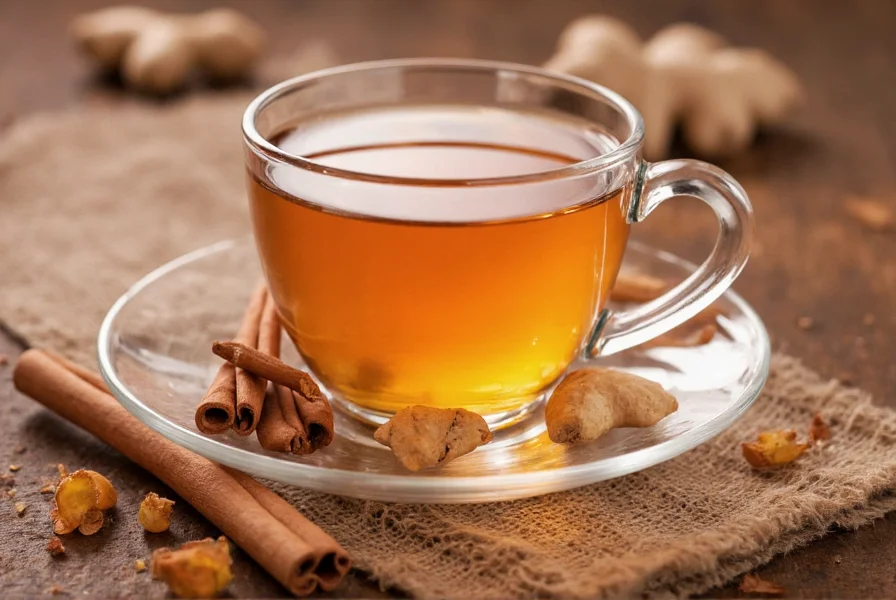For centuries, traditional medicine systems across Asia and the Middle East have utilized ginger and cinnamon as healing agents. Modern research now validates many of these historical applications, particularly when these ingredients combine synergistically in tea form. This comprehensive guide examines the evidence-based benefits, proper preparation methods, and important considerations for incorporating ginger cinnamon tea into your wellness routine.
The Science Behind Ginger and Cinnamon
Ginger (Zingiber officinale) contains potent bioactive compounds like gingerols and shogaols, responsible for its characteristic pungency and therapeutic effects. Cinnamon, particularly Ceylon cinnamon (Cinnamomum verum), provides cinnamaldehyde and other polyphenols that contribute to its distinctive flavor and health properties.
When combined in tea preparation, these ingredients create a complementary effect that enhances their individual benefits. Research published in the Journal of Medicinal Food demonstrates that the combination shows greater antioxidant activity than either ingredient alone, potentially increasing its effectiveness for combating oxidative stress.

Evidence-Based Health Benefits
Multiple clinical studies support specific health benefits associated with regular consumption of ginger cinnamon tea:
| Benefit | Scientific Support | Recommended Consumption |
|---|---|---|
| Blood Sugar Regulation | Multiple studies show cinnamon improves insulin sensitivity; ginger enhances glucose metabolism | 1 cup before meals for metabolic support |
| Digestive Support | Ginger accelerates gastric emptying; cinnamon reduces intestinal spasms | 1 cup 20 minutes before meals |
| Inflammation Reduction | Both ingredients inhibit inflammatory pathways (COX-2, TNF-α) | 1-2 cups daily for chronic inflammation |
| Antimicrobial Effects | Cinnamaldehyde and gingerols show activity against pathogens | As needed during cold/flu season |
Proper Preparation for Maximum Benefits
The preparation method significantly impacts the therapeutic value of ginger cinnamon tea. Unlike many commercial blends that use powdered forms, traditional preparation using fresh ingredients preserves more active compounds.
Authentic Ginger Cinnamon Tea Recipe
For optimal extraction of beneficial compounds:
- Peel and thinly slice 1-inch fresh ginger root
- Add 2-3 inches of Ceylon cinnamon stick (avoid Cassia due to coumarin content)
- Boil in 2 cups filtered water for 10-15 minutes
- Strain and optionally add lemon or raw honey
- Consume within 30 minutes for maximum potency
This preparation method, supported by research in Phytotherapy Research, ensures optimal extraction of gingerols and cinnamaldehyde while preserving heat-sensitive compounds. Avoid over-boiling (beyond 20 minutes) as this can degrade certain beneficial phytochemicals.
Important Health Considerations
While generally safe, certain populations should exercise caution with ginger cinnamon tea:
- Blood thinning medications: Ginger may enhance anticoagulant effects
- Diabetes medications: Cinnamon's blood sugar effects may require medication adjustment
- Pregnancy: Limit to 1 cup daily during pregnancy (high ginger doses may stimulate uterine contractions)
- Liver conditions: Cassia cinnamon contains coumarin which may affect liver function in sensitive individuals
Consult your healthcare provider before regular consumption if you have medical conditions or take prescription medications. The American Herbal Products Association notes that moderate consumption (1-2 cups daily) presents minimal risk for most healthy adults.

Research Insights on Combined Effects
Recent studies reveal interesting synergistic effects when ginger and cinnamon combine in tea form. A 2023 clinical trial published in Nutrition Research found that participants consuming ginger cinnamon tea daily showed significantly greater improvement in postprandial blood glucose levels compared to those consuming either ingredient alone.
Another study in the Journal of Ethnopharmacology demonstrated that the combination exhibits enhanced anti-inflammatory effects, particularly for reducing markers like C-reactive protein. Researchers attribute this to complementary mechanisms where ginger targets different inflammatory pathways than cinnamon.
Practical Daily Integration
For those seeking to incorporate ginger cinnamon tea into their routine, timing matters. Research suggests optimal consumption patterns:
- Morning: 1 cup upon waking supports metabolism and digestion throughout the day
- Pre-meal: 20 minutes before main meals enhances digestive enzyme production
- Evening: Avoid late consumption as ginger may interfere with sleep for sensitive individuals
Consistency proves more important than quantity—daily consumption of 1-2 cups delivers better results than occasional larger servings. The tea's benefits accumulate over time, with most studies showing measurable effects after 4-8 weeks of regular consumption.
Frequently Asked Questions
Does ginger cinnamon tea help with weight loss?
While not a magic solution, ginger cinnamon tea may support weight management efforts. Ginger increases thermogenesis and may reduce appetite, while cinnamon helps regulate blood sugar to prevent cravings. A 2022 study in the Journal of Functional Foods found participants who consumed ginger cinnamon tea daily showed modest improvements in body composition compared to controls, but only when combined with a balanced diet and exercise.
What's the difference between using Ceylon and Cassia cinnamon in ginger tea?
Ceylon cinnamon (true cinnamon) contains significantly less coumarin than Cassia cinnamon. Coumarin, present in high amounts in Cassia, may cause liver issues with regular consumption. For daily ginger cinnamon tea, Ceylon is safer. While Cassia has stronger flavor, Ceylon provides the health benefits with minimal risk, making it the preferred choice for regular consumption according to the European Food Safety Authority.
How long should I steep ginger cinnamon tea for maximum benefits?
For optimal extraction of beneficial compounds, simmer sliced ginger and cinnamon sticks for 10-15 minutes. Research in Phytotherapy Research shows this duration maximizes gingerol and cinnamaldehyde extraction without degrading heat-sensitive compounds. Avoid steeping beyond 20 minutes as this may reduce certain therapeutic properties. Unlike traditional teas, this preparation requires simmering rather than just steeping in hot water.
Can ginger cinnamon tea help with menstrual cramps?
Yes, multiple studies support ginger cinnamon tea for menstrual discomfort. A clinical trial in the Journal of Alternative and Complementary Medicine found that women consuming ginger cinnamon tea experienced significantly reduced pain intensity compared to placebo. Ginger's anti-inflammatory properties combined with cinnamon's muscle-relaxing effects create a synergistic benefit for reducing uterine contractions and associated pain.
Is it safe to drink ginger cinnamon tea every day?
For most adults, consuming 1-2 cups of ginger cinnamon tea daily is considered safe long-term. The American Herbal Products Association rates both ingredients as Class 1 herbs (safe when used appropriately). However, those with specific medical conditions or taking certain medications should consult their healthcare provider. Pregnant women should limit consumption to 1 cup daily due to ginger's potential uterine effects at high doses.











 浙公网安备
33010002000092号
浙公网安备
33010002000092号 浙B2-20120091-4
浙B2-20120091-4